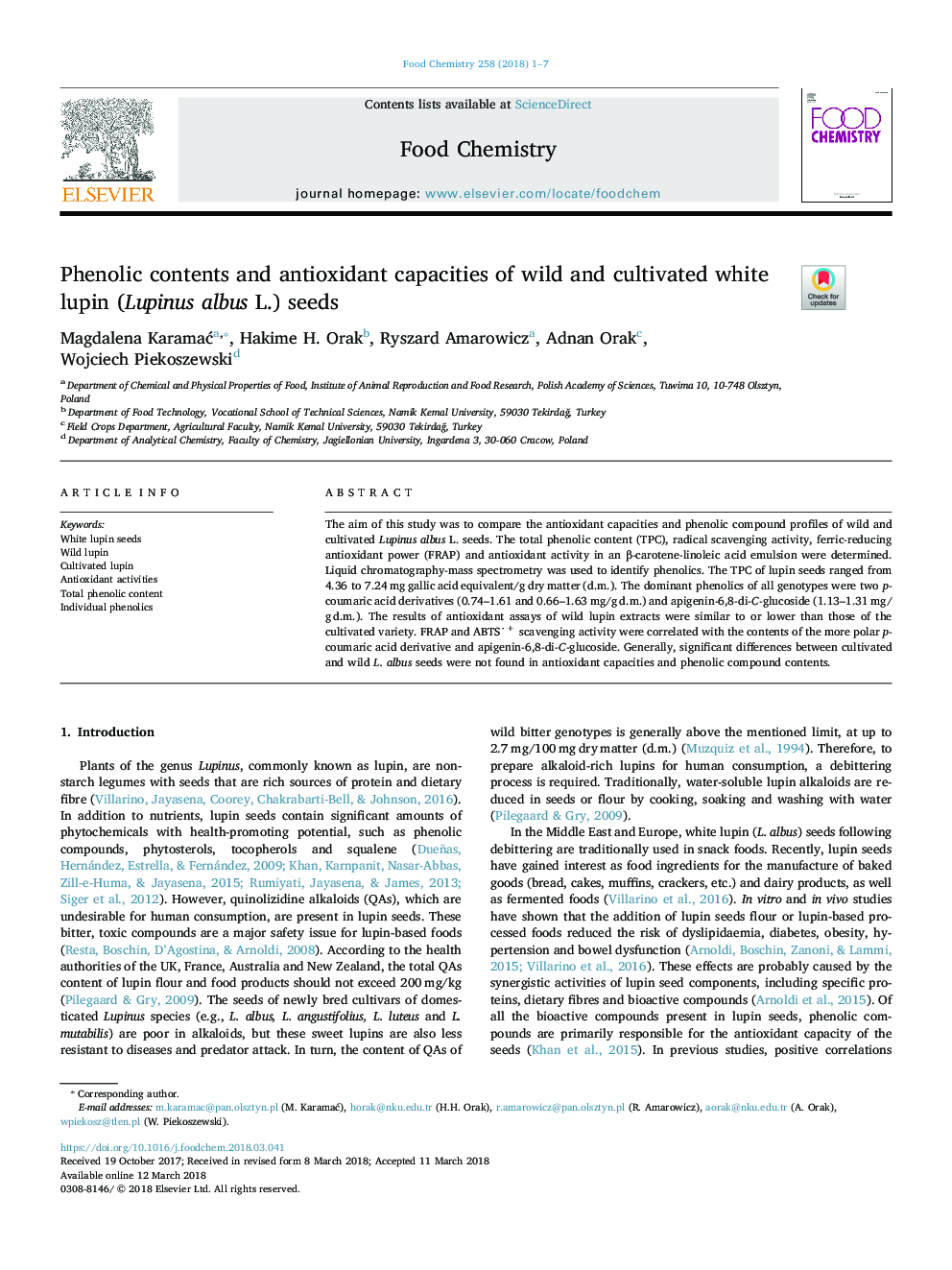| Article ID | Journal | Published Year | Pages | File Type |
|---|---|---|---|---|
| 7585079 | Food Chemistry | 2018 | 7 Pages |
Abstract
The aim of this study was to compare the antioxidant capacities and phenolic compound profiles of wild and cultivated Lupinus albus L. seeds. The total phenolic content (TPC), radical scavenging activity, ferric-reducing antioxidant power (FRAP) and antioxidant activity in an β-carotene-linoleic acid emulsion were determined. Liquid chromatography-mass spectrometry was used to identify phenolics. The TPC of lupin seeds ranged from 4.36 to 7.24â¯mgâ¯gallicâ¯acidâ¯equivalent/gâ¯dryâ¯matterâ¯(d.m.). The dominant phenolics of all genotypes were two p-coumaric acid derivatives (0.74-1.61 and 0.66-1.63â¯mg/gâ¯d.m.) and apigenin-6,8-di-C-glucoside (1.13-1.31â¯mg/gâ¯d.m.). The results of antioxidant assays of wild lupin extracts were similar to or lower than those of the cultivated variety. FRAP and ABTS+ scavenging activity were correlated with the contents of the more polar p-coumaric acid derivative and apigenin-6,8-di-C-glucoside. Generally, significant differences between cultivated and wild L. albus seeds were not found in antioxidant capacities and phenolic compound contents.
Related Topics
Physical Sciences and Engineering
Chemistry
Analytical Chemistry
Authors
Magdalena KaramaÄ, Hakime H. Orak, Ryszard Amarowicz, Adnan Orak, Wojciech Piekoszewski,
